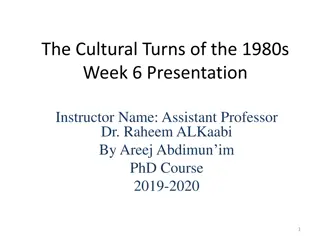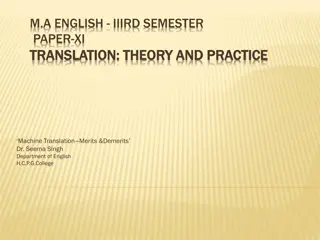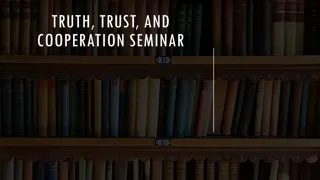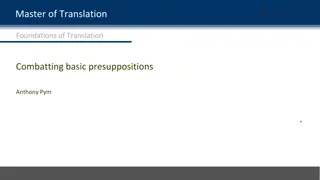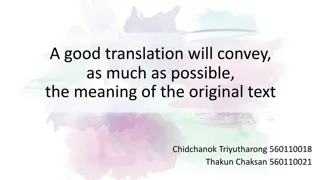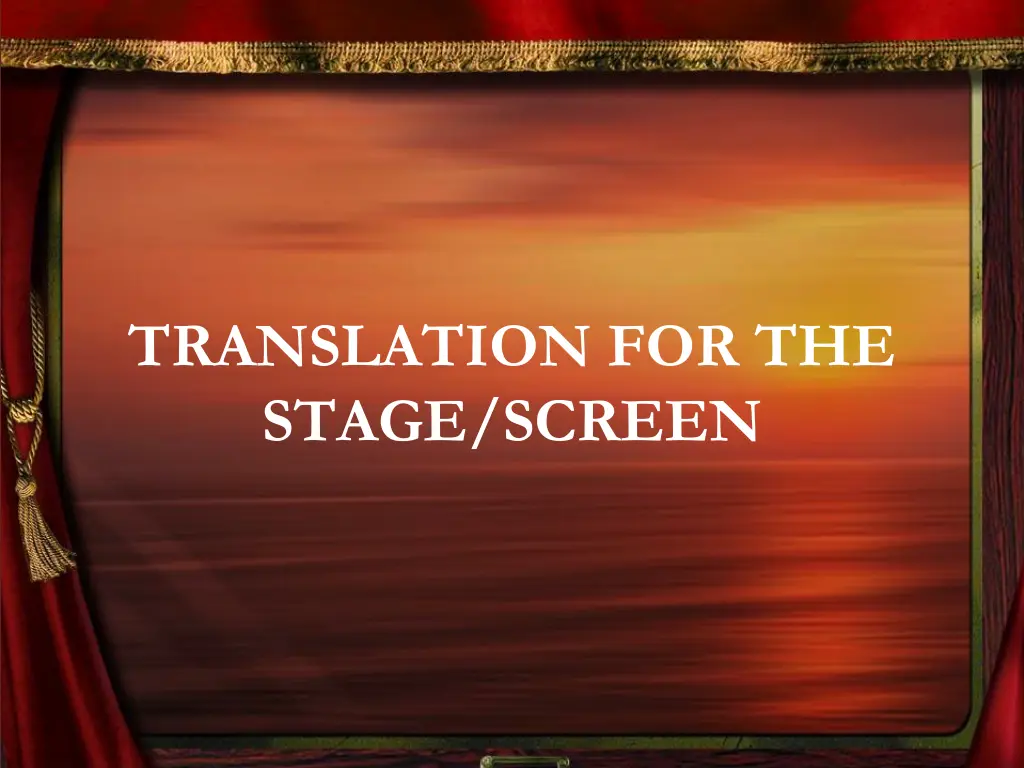
Exploring Translation Trends for Stage and Screen Adaptations
Delve into the intricate world of translation for stage and screen, understanding the nuances between conveying the words and ideas of the original, while maintaining cultural relevance. Discover the significance of audience, culture, and semiotics in the process of stage/screen translation, emphasizing the blend of acoustics, gestures, movements, and words. Gain insights into speech acts and the art of creating authentic translations that resonate with contemporary audiences.
Download Presentation

Please find below an Image/Link to download the presentation.
The content on the website is provided AS IS for your information and personal use only. It may not be sold, licensed, or shared on other websites without obtaining consent from the author. If you encounter any issues during the download, it is possible that the publisher has removed the file from their server.
You are allowed to download the files provided on this website for personal or commercial use, subject to the condition that they are used lawfully. All files are the property of their respective owners.
The content on the website is provided AS IS for your information and personal use only. It may not be sold, licensed, or shared on other websites without obtaining consent from the author.
E N D
Presentation Transcript
TRANSLATION FOR THE STAGE/SCREEN
TRANSLATION TRENDS A translation must give the words of the original. A translation must give the ideas of the original. A translation should read like an original work. A translation should read like a translation. A translation should read as a contemporary of the original. A translation read as a contemporary of the translation. A translation may add to or omit from the original. A translation may never add to or omit from the original.
Speech Act Example If I stepped on your shoe accidentally and then said Oh, I m so sorry , there are three kinds of answers to the question: What have I just done? (a) You have just said something ; (b) You have just apologised to me ; (c) You have just sent away my annoyance .
The target audience grows into a particular CULTURE Culture: it is understood not in the narrow sense of high learning or intellectual advancement, but as firstly a totality of knowledge, proficiency and perception; secondly, its immediate connection with behavior (or action) and events, and thirdly, its dependence on norms, whether those of social behavior or those accepted in language usage (Snell Hornby, Translation Studies: An Integrated Approach).
Semiotics of stage/screen translation Acoustics Gesture Movement (proxemics, kinesics) Words










